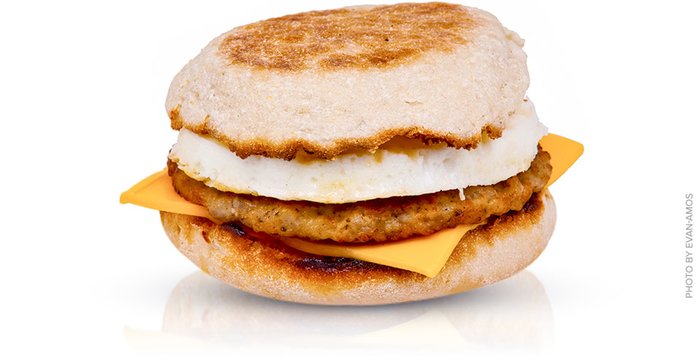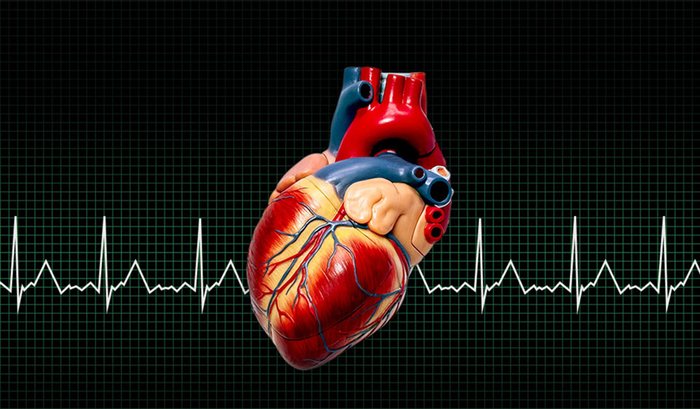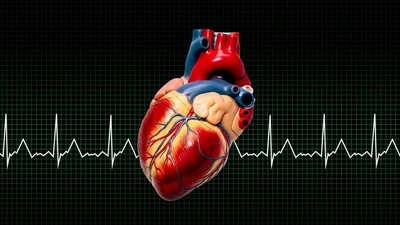Those of us who are fit-minded know eating healthy food and exercising can help keep our tickers ticking for a long time.[1,2]
The case is closed at this point concerning the benefits of general fitness activities versus a sedentary lifestyle on heart health. The same goes for diets that promote a healthy body weight. But for some workout and diet strategies—particularly more extreme ones—the pros and cons regarding heart health grow murkier.
In certain instances and for certain individuals, your workouts and diet could place you at a greater risk for heart disease and even sudden death.
Diet Dilemmas
Your body's health and your fitness level is primarily built upon the solid foundation of a healthy diet. However, there are some trendy plans that may not be the best choices for your heart.
If It Fits Your Macros (IIFYM)
Dieters who follow trends like IIFYM can run into trouble when they aren't concerned about food quality. Tracking macros may help you reach a numbers goal, but if you aren't putting any effort into eating a well-balanced diet filled with a variety of foods that provide healthy nutrients, then you may not be cultivating a healthy body.
"If you're eating 4,500 calories a day, you have much more room to add in other things that many consider 'bad' such as Pop-Tarts, cookies, and other snack foods," says Mike T. Nelson, PhD, CSCS, and member of the American College of Sports Medicine.

Dieters who follow trends like iifym can run into trouble when they aren't concerned about food quality.
The downfall is that prepackaged foods like these often contain trans fats. Trans fats can increase LDL and decrease HDL levels, which is exactly what you don't want for healthy cholesterol levels. Too much trans fat in your diet is also associated with an increased risk for type 2 diabetes and whole-body inflammation.[3,4]
Although not everyone who follows IIFYM will include an unhealthy amount of prepackaged snacks or foods with trans fat in their diet, it's never a bad idea to remember that the quality of your food matters. If you want your body to be healthy on the inside, you may need to think beyond the number of carbs, fat, and protein you eat each day.
High-Fat/High-Protein Diets
Other trending diets may contain nutrients that your body is not able to process in large quantities. High-fat, high-protein diets may cause issues for those who are not about to burn large amounts of fat.
"If your body is tuned to burn lots of fats, you will probably be OK," says Dr. Nelson. "However, if your body is not adapted to using them, you may run into issues. We know that studies related to blood flow after a high-fat meal show acute issues, especially in those who are overweight." It appears that an elevated concentration of free fatty acids may reduce the production of nitric oxide, increasing the incidence of hypertension.[5] If you're considering adopting a high-fat diet, remember that not all dietary fats are created equal, just like not all bodies use dietary fats in the same way.

In general, those who are active and fit may use a high-fat, high-protein diet, such as low-carb or ketogenic diets, with more success than inactive people. "In a classic study, active and inactive subjects were fed a McDonald's breakfast meal consisting of an Egg McMuffin with sausage and hash browns.[6] Following the high-fat meal, researchers measured flow-mediated dilation and found that it decreased by almost ten percent in the inactive group," notes Dr. Nelson. Over time, this could increase a person's risk for atherosclerosis. These findings support the concept that habitual physical activity can reduce the negative alterations from a high-fat meal on cardiovascular health.
The physical fitness of an individual may have something to do with how well specific diets work. But maintaining balance in your diet and eating all nutrients in moderation (including alcohol) is always the best option. Dr. Nelson concludes, "While fat in moderation is not the evil it was made out to be for many years, mainlining fats is not exactly ideal for your cardiac health."
Contest Prep
Although the bodybuilding community may look really healthy, extreme dieting can cause problems. Dr. Spencer Nadolsky, a bodybuilder turned triathlete, osteopathic family physician, and reviewer for Examine.com knows how tough contest preparation can be on the body.
"Very low-carb/high-saturated-fat diets can sometimes negatively affect heart health," he says. "Folks who follow those types of diets can have irregular cholesterol levels. Their cholesterol levels—most importantly their non-HDL cholesterol, ApoB, and LDL particle levels—get to levels seen in people who can have premature atherosclerosis. This doesn't happen in everyone who does this diet, but it's something to be aware of."

Try to schedule contests so that you your body has ample time to recover and you can maintain a healthy lifestyle for most of the year.
"When male or female patients diet too hard—and consume too few calories—it may affect the way the brain communicates with the organs," explains Dr. Nadolsky. "Men can develop low testosterone and thyroid levels. Women can develop low progesterone and estrogen levels, which can lead to loss of menstruation, weakened bones, and even thyroid issues. Being in this state will have adverse effects on your heart in the long run. For these reasons, I would limit physique competitions to a certain part of the year."
To maintain or recover a healthy hormone profile, avoid excess dieting and maintaining an extremely low body-fat level for long durations. Try to schedule contests so that you your body has ample time to recover and you can maintain a healthy lifestyle for most of the year. Regular physician monitoring during contest prep can also help detect any red flags.
Excessive Exercise
According to the American College of Sports Medicine, it's recommended that you log about 150 minutes of moderate-intensity exercise or 75 minutes of high-intensity exercise per week to keep your heart healthy.[7] Some of you probably accomplish that in a few days! It's clear that exercise is heart-healthy, but there are risks for those who exercise to extremes for long periods of time.
A review study published in Mayo Clinic Proceedings found that some endurance athletes who exercised at very high intensities over a long duration were at a greater risk of developing heart problems than those who exercised more moderately.[8] "The research we have [indicates that] excessive exercise in any form may lead to cardiac issues," says Dr. Nelson. "Those who run ultra-endurance events are at a higher risk. Unsurprisingly, those who only do high-pressure powerlifting or weightlifting only may also be at a higher risk."

A review study published in mayo clinic proceedings found that some endurance athletes who exercised at very high intensities over a long duration were at a greater risk of developing heart problems than those who exercised more moderately.
As the saying goes, too much of any one thing is not always a good thing. "Each type of exercise stresses the heart in different ways, and too much of any one form can push you into the higher-risk spectrum," Dr. Nelson explains.
Lifting 3-5 times per week is not going to increase cardiac risk for most people, and the same goes for those who run less than 30 miles per week. "However, when you are pushing the limits by doing super-heavy lifting at high frequencies for decades or running repeated ultramarathons for years, your risk is going to go up," says Dr. Nelson.
Exactly how much exercise it takes for a population to be at risk is still to be determined. But, just as with your diet, it's possible to become too extreme. If you train all-out for years on end, note that you are at greater risk for developing heart-related issues.
Endurance athletes should schedule downtime in the offseason and should also explore other forms of exercise, including cross training and resistance training.
The Exam Room
Even if you're the picture of health, regular physical exams can help detect any early warning signs of heart disease.
Dr. Nadolsky recommends that patients in their twenties get a fasting lipid panel at least once every five years. "I tend to do them earlier if there are any lifestyle changes like diet, exercise, or big changes in body composition," he says. "I also add on a fasting plasma glucose test and even a hemoglobin A1c if the patient has a family history of type 2 diabetes. The hemoglobin A1c reveals average blood sugars over the preceding three months."
Regular blood panels should continue into your thirties. As with most procedures, it's always a good idea to check with your insurance provider prior to scheduling your lab visit to determine any out-of-pocket expenses you will be required to cover.

Even if you're the picture of health, regular physical exams can help detect any early warning signs of heart disease.
Dr. Nadolsky also recommends keeping an eye on blood pressure as well as waist circumference each year, both of which can be monitored at home. Portable blood pressure monitors make it easy to track your blood pressure and may help with early diagnosis of high blood pressure.
If your systolic (top number) is consistently over 120, or your diastolic (bottom number) is greater than 80, you may want to make an appointment with your primary care physician for additional testing and to discuss your results.[9]
As for waist circumference, women should stay below 31.5 inches and men below 37 inches to reduce the risk for chronic diseases such as type 2 diabetes, high cholesterol, and cardiovascular disease.[9]
References
- Fletcher, G. F., Balady, G., Blair, S. N., Blumenthal, J., Caspersen, C., Chaitman, B., ... & Pollock, M. L. (1996). Statement on exercise: Benefits and recommendations for physical activity programs for all Americans a statement for health professionals by the committee on exercise and cardiac rehabilitation of the council on clinical cardiology, American heart association. Circulation,94(4), 857-862.
- Lichtenstein, A. H., Appel, L. J., Brands, M., Carnethon, M., Daniels, S., Franch, H. A., ... & Wylie-Rosett, J. (2006). Diet and lifestyle recommendations revision 2006 A scientific statement from the American Heart Association nutrition committee. Circulation, 114(1), 82-96.
- Salmeron, J., Hu, F. B., Manson, J. E., Stampfer, M. J., Colditz, G. A., Rimm, E. B., & Willett, W. C. (2001). Dietary fat intake and risk of type 2 diabetes in women. The American Journal of Clinical Nutrition, 73(6), 1019-1026.
- Mozaffarian, D., Pischon, T., Hankinson, S. E., Rifai, N., Joshipura, K., Willett, W. C., & Rimm, E. B. (2004). Dietary intake of trans fatty acids and systemic inflammation in women. The American Journal of Clinical Nutrition, 79(4), 606-612.
- Steinberg, H., Paradisi, G., & Et al. (2000). Free fatty acid elevation impairs insulin-mediated vasodilation and nitric oxide production. Diabetes, 49(7), 1231-8. Retrieved from
- Johnson, B., Padilla, J., & Et al. (2011). Vascular consequences of a high-fat meal in physically active and inactive adults. Applied Physiology: Nutrition and Metabolism, 36, 368-375.
- Haskell, W. L., Lee, I. M., Pate, R. R., Powell, K. E., Blair, S. N., Franklin, B. A., ... & Bauman, A. (2007). Physical activity and public health: updated recommendation for adults from the American College of Sports Medicine and the American Heart Association. Circulation, 116(9), 1081.
- O'Keefe, J., Patil, H., Lavie, C., Magalski, A., Vogel, R., & Mccullough, P. (2012). Potential Adverse Cardiovascular Effects From Excessive Endurance Exercise. Mayo Clinic Proceedings, 87(6), 587-595.
- American College of Sports Medicine (Ed.). (2013). ACSM's health-related physical fitness assessment manual. Lippincott Williams & Wilkins.

